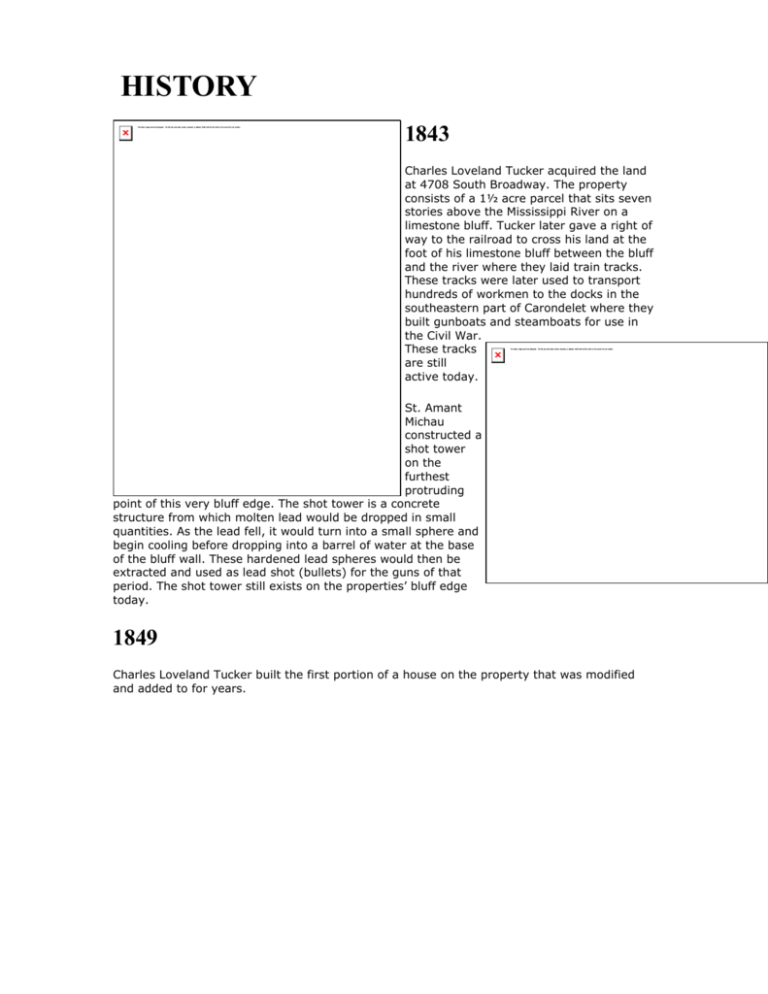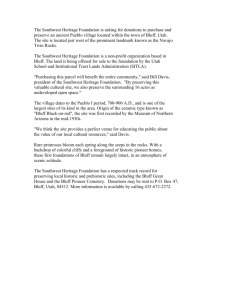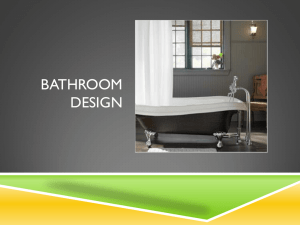history
advertisement

HISTORY 1843 Charles Loveland Tucker acquired the land at 4708 South Broadway. The property consists of a 1½ acre parcel that sits seven stories above the Mississippi River on a limestone bluff. Tucker later gave a right of way to the railroad to cross his land at the foot of his limestone bluff between the bluff and the river where they laid train tracks. These tracks were later used to transport hundreds of workmen to the docks in the southeastern part of Carondelet where they built gunboats and steamboats for use in the Civil War. These tracks are still active today. St. Amant Michau constructed a shot tower on the furthest protruding point of this very bluff edge. The shot tower is a concrete structure from which molten lead would be dropped in small quantities. As the lead fell, it would turn into a small sphere and begin cooling before dropping into a barrel of water at the base of the bluff wall. These hardened lead spheres would then be extracted and used as lead shot (bullets) for the guns of that period. The shot tower still exists on the properties’ bluff edge today. 1849 Charles Loveland Tucker built the first portion of a house on the property that was modified and added to for years. 1858 Charles Loveland Tucker gave a right of way to the Iron Mountain Railroad to hang a train station on the side of his bluff. In a pictorial review of American railroad stations from 1831 to 1920, the author nominates Tucker’s station “as the most unusual of all suburban stations.” A picture of the station was used in an advertisement for the American National Bank accompanying the picture were the statements “this must be the most unusual station ever built” and “the south St. Louis bluff side station was unlike any other – before or since!”) 1907 Fredrick and Emile Hoffman purchased the property from Charles Loveland Tucker At the Hoffman’s death the property was willed to their daughter, Eleanor Walz and her husband Herman. The Tucker, then Hoffman, then Walz home was the largest riverboat gothic mansion on mansion row. The Home stood 5 stories to the east (facing the Mississippi river) and 3 stories to the west (facing Broadway). 1979 – late summer Fire destroyed the then vacant Walz home beyond reasonable financial repair. 1982 The Walz mansion was razed. CURRENT TIMES On October 9, 2000, Mark Widmann bought the 1 ½ acre parcel of land from the Walz Family. Mark did the initial design of his home in his computer using a home design software program. Mark then hired one of the top architects; custom homebuilders; lighting, landscape and interior designers in the area to bring his initial design to life. Over the 25 year period between the razing of the burnt Walz home and the purchase of the land by Mark, more than 100 trees intertwined with vines and poison ivy had grown on the site of the old home. (picture 1) These trees were cleared to make way for the new home that was placed in almost the exact location as the Walz home, which was built more than a century and a half before. After Mark’s home was complete, Mike Miller landscape designer, horticulturist and radio celebrity, selected more than 15,000 trees, shrubs and plants that were added to the property. These new plantings, along with the old growth trees that were saved, create an acre and a half of beautiful landscape without 1 blade of grass to cut. Ken McKelvie, a top lighting designer, spun his magic by selecting lighting fixtures that beautifully illuminate the house as well as the homes’ extensive artwork collection. Some fixtures are works of art themselves while others add whimsy. Dangling from cables in many parts of the home one can find light fixtures consisting of planes, parachutes, acrobats, and fireflies all adding their own style of light. The home has tall glass doors across both levels of the back of the house which face the river. This allows each room to have an incredible view of the river as well as the neighboring state of Illinois. It also gives each room access to the more than 4000 square feet of decks and patios that terrace from the house to the bluff’s edge. A portion of the upper deck cantilevers over the support system below and reaches toward the river with a V shaped point. From this location on the deck one has the feeling of being on the bow of a ship, a design feature of architect Tom Cohen. The deck railings were custom designed and built by the artist Mark Bunch. The zigzag pattern of the steel spindles, with their points aiming down river, gives a sense that the railings are flowing in the same direction as the river. The largest of the patios was built along the bluff’s edge and is more than 1100 square feet. The patio follows the contour of the bluff and ends at one of the only shot towers left in St. Louis. The new patio was poured of exposed aggregate concrete and placed in the exact same configuration as the flag stone patio that was laid more than 100 years before. With the river to the east, the 150-foot long patio extends to a serpentine wall to the west that was also laid more than 100 years before. This original limestone wall stands on the average 3-½ feet tall – a perfect height for sitting and enjoying the view. In the center of the length of the more than 175-foot long wall is a grill built into a limestone chimney. The original grill had long ago rusted away, its remnants removed and a custom stainless grill was constructed and fitted back in the same space as its predecessor. AMENITIES One dining room has a shattered glass tabletop resting on three art stands and can seat 12. A second dining room can seat 72. The home has 3 ½ kitchens that were outfitted with restaurant grade equipment and a 90 second dishwasher. The kitchens have more than 70 running feet of counters made from wood, stainless steel, marble and granite. There is one fireplace in the lower level as well as one on the main level. The chimney stacks from the fireplaces exit the roof of the house side by side, the portion of the stacks above the roofline were artistically finished to resemble two riverboat steam stacks. (see Artega photo) The stacks tower more than forty feet in the air and are clearly visible by the river traffic below - paying homage to a style of transportation seldom seen today. A state of the art audiovisual system was installed with speakers placed throughout the house, on the decks and patios, on the bluffs edge, as well as above the driveway to welcome guests as they approach the house. The system allows for cordless microphones to be used as well as allowing a musician the ability to distribute the music from his or her instrument through the speakers. The home has 6 bathrooms, one a little more interesting than the next – conceived in the mind of Don Occhi, the owner of Occhi Interior Design Solutions. The pool bath has walls made of diamond plate wainscoting for the lower 4 feet and mirrors covering the rest of the walls to the 10’ ceiling. This bathroom has a black granite sink top, bright red ceiling, ship lights to see by and a mini rain showerhead. The two guest suite bathrooms also have black granite sink tops and mini rain showerheads. These restrooms supplied with linen hand and bath towels monogrammed with the words HOTEL WIDMANN. The lady’s ½ bathroom has a floor made from glass tiles imported from Austria and a matching color glass sink that floats on the wall. The toilet does not sit on the floor but floats on the wall and can be flushed by simply sitting back. The round mirror above the sink has light all the way around, perfectly lighting a lady’s face with no shadowing - great for the occasional makeup touch up. The master suite bathroom has porcelain tile on the floor, around the Jacuzzi tub and on the custom shower walls that rise 10’ to the vaulted shower ceiling - also finished in the same tile. This 32 square foot shower has two windows that allow one to watch the river activity while showering. The wall that separates the shower from the bathroom is one 64 square foot piece of glass that was sandblasted to create a tick-tack-toe grid. This bathroom has a slate sink top with a trough sink and a pot and pan filler faucet. The restroom off the bathroom has a maple cabinet topped with the same slate and a floating toilet. The 12’ bar in the lower level is topped with maple flooring and faced with aluminum barn roofing. Under the bar is a commercial beer cooler – the closet to the side houses a commercial ice machine Just beyond the bar, past the pool bath and through the sliding glass door is an 18’ long 4’ wide 4’ deep – some people call it a hot tub some call it a pool. This unit has two separate compartments – the larger side consists of 80% of the tub and is heated with a 250,000 btu gas heater, the other side heated with an electric heater. The two separate heating systems allows one to heat the two different sides to different temperatures, or in the summer one can choose to not heat one side at all. There is a recessed cooler and trash can in the deck on either side of the tub, allowing one to access a beverage and discard it without leaving the pool.






